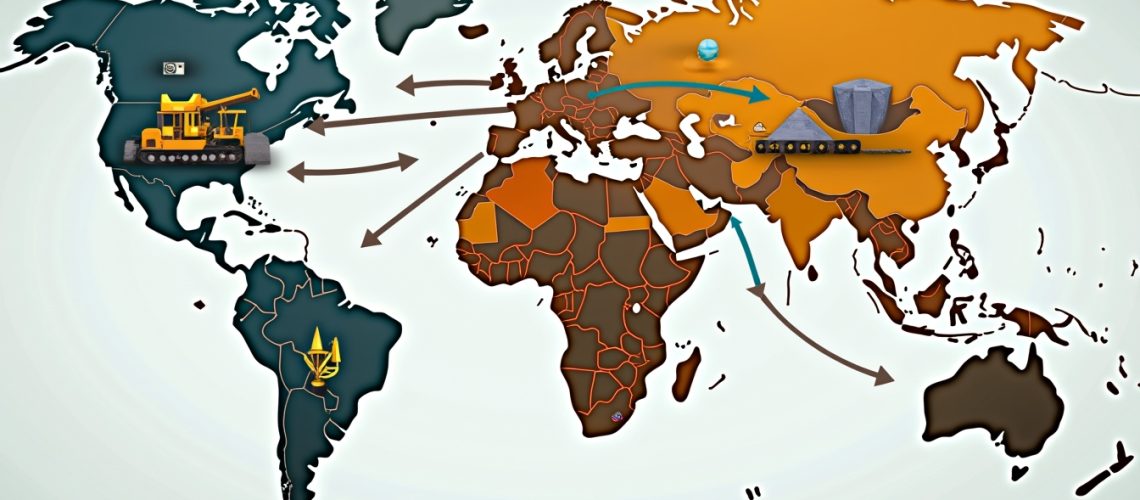The global critical minerals sector stands on the precipice of significant transformation, with Donald Trump's potential return to the presidency signalling a seismic shift in geopolitical and economic dynamics. His aggressive trade policies and strategic vision are poised to reshape the intricate landscape of mineral production, supply chains, and international relations.
How Will Trump's Policies Dramatically Reshape Critical Mineral Strategies?
The imminent policy changes herald a new era of resource competition, where protectionist measures and national security imperatives converge to redefine global mineral markets. Trump's approach signals a fundamental recalibration of how nations view and manage critical mineral resources.
Geopolitical Tensions and Trade Policy Dynamics
Key strategic elements of Trump's critical mineral approach include:
- 25% tariff imposed on Canadian and Mexican mineral imports
- 10% tariff targeting Chinese mineral and rare earth supplies
- Potential disruption of existing international mineral supply chains
- Aggressive repositioning of U.S. mineral procurement strategies
Amelia Haines from BMI notes, "Trump's policies are expected to amplify protectionist measures… dramatically altering U.S. critical minerals policy." These tariffs represent more than economic manoeuvring; they symbolise a broader geopolitical strategy to reduce dependence on international suppliers.
Domestic Production: A National Security Imperative
Trump's vision prioritises domestic critical mineral production through unprecedented policy interventions:
- Streamlining federal permitting processes
- Reviewing restrictive mining regulations
- Opening additional federal lands for mineral exploration
- Fast-tracking critical mineral project approvals
The executive order signed on January 20 emphasises accelerating domestic production, contrasting sharply with previous administration's more measured approach. This strategy aims to transform the U.S. from a mineral importer to a potential global supplier.
Resource Nationalism: A Global Trend Intensifies
The emerging landscape reveals intensifying resource nationalism, particularly in:
- Sub-Saharan Africa (identified as a high-risk mining region)
- South American mineral-rich countries
- Increased vertical integration strategies
Haines emphasises that countries are recognising minerals' strategic importance, particularly for emerging technologies and clean energy transitions. This trend pushes nations to exert greater control over their mineral resources, seeking value capture across production stages.
Technological Innovation: The Competitive Edge
Technological advancements are becoming crucial in the critical minerals sector:
- AI reducing mining operational costs by approximately 15%
- Drone-based ore mapping technologies
- Predictive maintenance algorithms
- Enhanced safety compliance through technological interventions
Olga Savina from BMI highlights that technological innovations will be essential in driving efficiency and reducing environmental footprints in mineral extraction and processing.
The Inflation Reduction Act: An Uncertain Future
Trump's potential policies create significant uncertainty for the Inflation Reduction Act (IRA):
- Potential cancellation of EV tax incentives
- Disruption of existing mineral supply chain investments
- Reassessment of national security mineral strategies
Despite potential policy dismantling, securing critical mineral access remains a national security priority. The complex interplay between economic strategy and geopolitical considerations will continue to evolve.
Future Outlook: Critical Minerals in Energy Transition
Projected developments include:
- 500% lithium demand increase by 2030
- Significant copper supply deficits anticipated
- Continued focus on renewable energy storage requirements
- Increased merger and acquisition activity in critical mineral sectors
Key Implications for Investors and Stakeholders
- Expect heightened market volatility
- Prepare for potential supply chain disruptions
- Monitor technological innovations
- Assess geopolitical risk factors
- Consider diversification strategies
The critical minerals sector stands at a transformative crossroads, with Trump's potential policies promising to reshape global mineral dynamics fundamentally. Stakeholders must remain agile, understanding that the intersection of technology, geopolitics, and resource strategy will define future success.
Are You Ready to Navigate the Shifting Landscape of Critical Minerals?
Stay ahead of the geopolitical and economic shifts in the critical minerals sector with Discovery Alert’s real-time notifications on significant ASX discoveries. Whether you're responding to policy changes or seeking new investment opportunities, our AI-driven alerts provide the insights you need to excel in mineral investing. Experience it now with a 30-day free trial at Discovery Alert.







